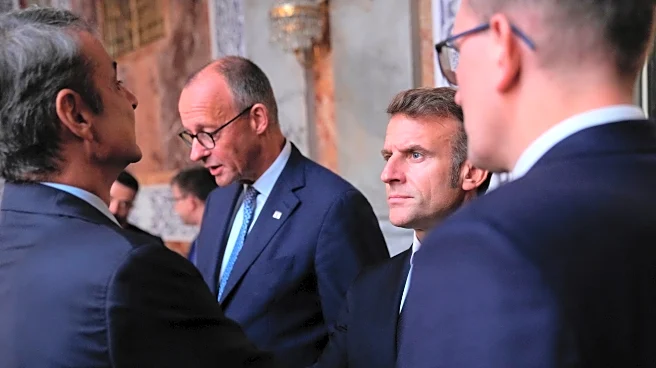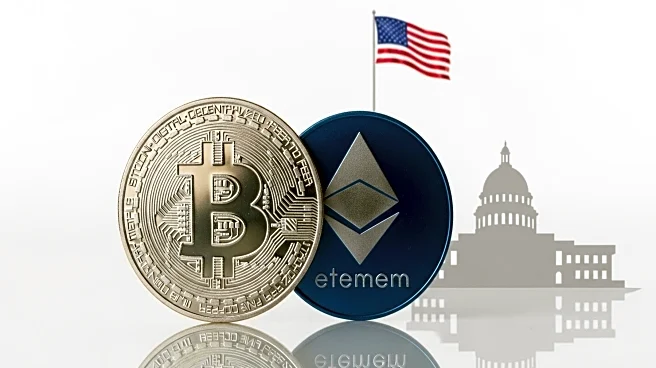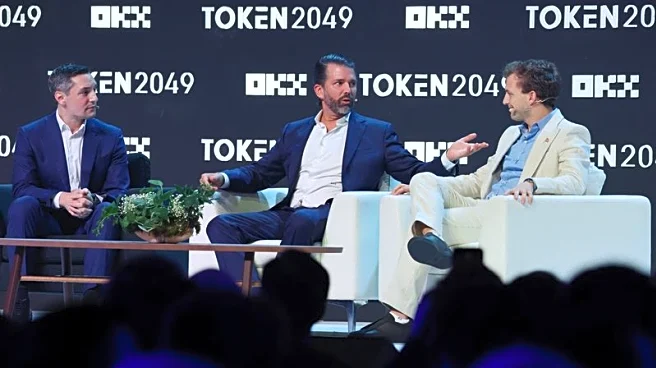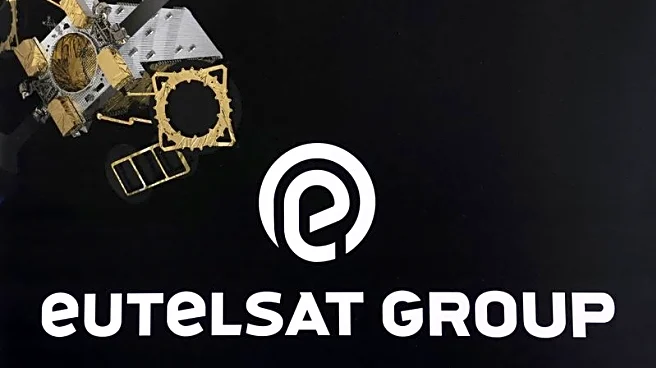What's Happening?
Vlad Tenev, CEO of Robinhood Markets Inc., has expressed strong confidence in the future of asset tokenization, describing it as an unstoppable 'freight train' poised to revolutionize major financial markets. During the Token2049 conference in Singapore, Tenev discussed the potential for tokenized assets, which are digital representations of real-world assets like stocks and commodities, to be recorded and traded on blockchain platforms. Robinhood has already begun offering tokenized U.S. stocks to customers in the European Union, a move that has significantly boosted its stock value. Tenev anticipates that tokenization will become the default method for gaining exposure to U.S. stocks outside the country, driven by increased licensing and regulatory clarity.
Why It's Important?
The tokenization of assets represents a major shift in how financial markets operate, promising enhanced efficiency and accessibility. By enabling assets to be traded on blockchain platforms, tokenization could reduce transaction costs and increase market liquidity. This development is particularly relevant for international investors seeking exposure to U.S. stocks, as it offers a streamlined and potentially more cost-effective method of investment. The growing interest from institutional giants like Morgan Stanley and BlackRock further underscores the transformative potential of tokenization, which could eventually merge cryptocurrency and traditional finance into a unified system.
What's Next?
As tokenization gains traction, Robinhood plans to expand its offerings beyond Europe, potentially influencing global financial markets. However, Tenev predicts that the U.S. may be slower to fully embrace tokenization due to entrenched financial infrastructure. The ongoing development of regulatory frameworks will be crucial in facilitating broader adoption. As more jurisdictions establish clear guidelines, the integration of tokenized assets into mainstream finance is likely to accelerate, paving the way for a new era of financial innovation.












